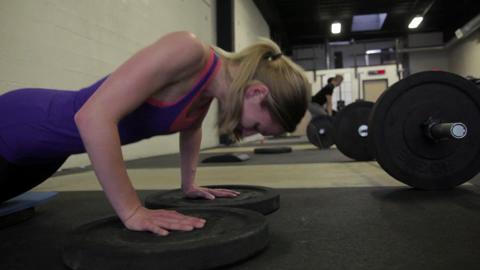There are a variety of ways to track your heart rate during a workout: counting beats per minute by locating your pulse at your neck or wrist, wearing a heart rate monitor, or tuning into your rate of perceived exertion, or RPE. Understanding how to quickly judge how hard you are working is a skill worth developing if you are interested in improving your fitness ability – imagine an elite athlete stopping in the middle of a race or game to take her heart rate and then ask yourself if you are training for mediocrity or for optimal performance. If you’re training for the latter, now is the time to get in touch with your inner athlete by familiarizing yourself with RPE. Here’s what the numbers mean:
RPE 1-2: Very easy; you can talk with no effort.
RPE 3-4: Easy; you are warming up or cooling down and can talk with little effort.
RPE 5-6: Medium exertion; you’re breathing a little faster, your heart rate is elevated and you feel like you’re ‘working out.’
RPE 7-8: Moderately hard to difficult; you’re breathing pretty hard and probably sweating. Talking requires some effort and you feel like you need to focus.
RPE 8-9: Very difficult; talking requires maximum effort and you are irritated by people who try to interrupt you.
RPE 10: Maximum exertion; no talking possible, rapid heart rate, muscular burning, profuse sweating
Memorize these numbers and apply them to your next workout. Let’s say you are on a treadmill and usually walk or run for 30 minutes, 3 days a week, reaching a maximum RPE of 6 for each workout. This is an admirable habit but if you’re hoping to lose some weight or increase your speed for an upcoming 5k you’re going to have to add some intensity to at least one of these workouts so that you start to know what an ‘8-9’ means on the RPE scale. Try increasing your speed, incline, or both for 1 minute during your 30-minute workout until you reach the upper limits of that RPE scale. At levels 8, 9 and 10, there will be discomfort – not going to lie to you. Fear starts to creep in at this level, as if maybe you’re going to lose control of some bodily function. Take a deep breath, in your nose and out your mouth. You’re going to be ok. This moment will pass and you’re going to survive and be better off for having taken yourself to the brink and then pulled yourself back to safety using your own good sense and ability. Also, that moment when you get to take your intensity level down, as when you reach the apex of that mother hill you challenged yourself to run up… you cannot beat that sense of euphoria and self-worth.
Now… let’s talk about honesty. Becoming adept at recognizing your RPE means being completely honest with yourself about how hard you are working and whether or not you could take it up a notch without passing out, vomiting, or otherwise running yourself into the nearest wall. One reason why the best intentions for weight loss, muscle building, or any other fitness goal can drag on for years without fruition is because people are not honest with themselves about how hard they are working, either taking it too light and thus not reaching a level where change occurs, or hitting it so hard over and over and over that the body is unable to recover, thus leading to injury and/or illness. The good news is that this internal conversation about regulating your exertion takes place on a metaphysical continuum of mastery; in other words, you have your whole life to improve this skill. Practice, patience, and a good dose of humor are essential; starting out may be daunting if you are hanging on to old habits which may seem comfortable but leave you with an uneasy sense that you are not fulfilling your potential. Breaking out of those habits is no small feat, but millions of people do it every day, even right now as you read this. If you believe you are one of those people, make a commitment to be honest with yourself about your abilities and slowly build upon that commitment, looking back to reinforce it every so often to remind yourself of your best intentions.
While you are getting used to using RPE as a gauge for work level, you may need some form of proof to reassure yourself that you are indeed a competent self-guide. To calculate your target heart rate range for performing work at 70%-90% of your potential, or 7-9 on the RPE scale, plug your numbers into this general formula:
- Calculate your MHR (maximum heart rate): 220 – (your age) = (MHR)
- Calculate your RHR (resting heart rate): (heart beats in 10 seconds) x 6 = (RHR)
- Calculate your HRR (heart-rate reserve): (MHR) – (RHR) = (HRR)
- Determine your 70% work level (RPE 7): (HRR x .7) + (RHR) = (min. target rate)
- Determine your 90% work level (PRE 9): (HRR x .9) + (RHR) = (max. target rate)
Mixing up your routine to include high intensity work can help you to achieve those sought-after fitness goals you’ve been telling everyone you’re working towards. Determining your workout intensity based on RPE is the quickest way to genuinely hit that higher intensity, but there is some skill involved in using RPE. A heart rate monitor or the above formula may assist you in becoming more trusting of your ‘gut’ feeling regarding your limitations and potential, but whatever your preference for determining your rate of exertion, is it worth your time to step out of your comfort zone just long enough to elicit positive, sustainable, health-preserving change.
Add The Sports Daily to your Google News Feed!
